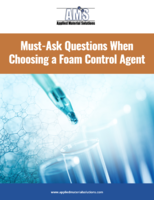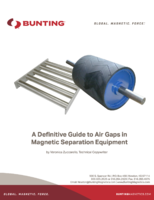Specialized Part Washing Now Available in the Midwest
Share:
Specialized part washing is now offered at our state of the art metal stamping facility in Carol Stream. We received our DURR ECOCCore P3 machine in early Spring and as the seasons unfold, I see a lot of activity at this work center on our plant floor. Wanting to know more, I took time to speak with Eric Swanson, Program/Project Engineering Manager to get his insight on this “one-of-a-kind” Midwest regional service offering.
We’ve had the DURR Cleaning Machine for 8 months now. What have been the benefits to having this machine on-premise?
Royal Die can now provide clean parts to customers and exceed their expectations in overall quality. We can quickly set the machine to wash a customer product, pack and ship. Royal Die will continue to be the change, modern manufacturing needs.
How long did the research process take before deciding to add the DURR machine to Royal Die’s arsenal?
We started in early in 2015 tested parts washing with a few aqueous wash suppliers. About mid-year we settled on a different process that met our requirements of being safe for our team, environmentally sound and easy to manage. We looked at several machine manufacturers with technologies that matched. We ran several more tests before the decision to move forward with Durr. We issued a PO mid-February of 2016 and Durr delivered at the end of the month. We commissioned the machine March 20, 2016.
80% of DURR sales originate within businesses associated with the automotive industry. Did RDS consult with competing washing machine manufacturers? What sold you on the DURR?
Throughout the search process, trials and commissioning Durr stood out as the best choice for Royal Die. We tried to work similar machine manufacturers to get parts clean in the same way. There wasn’t enough there to justify a purchase.
In the past would we have sent parts to an outside vendor for washing? How much time and cost saving do you think Royal Die can equate due to having the unit on-premise?
We have used outside service suppliers for parts washing. We can now control the process. We did this to help our customers get a better product. The outside services use old technology to clean parts. Some of the unintended consequences are damaged or degraded parts. We have removed the opportunity for damaged parts due to mishandling. As for degradation, we have eliminated the drivers. Our process is safe for all metals and does not use acid or water. Customers will benefit and we will benefit from the elimination of complaints, rejects and returns.
What challenges has Royal Die faced in regards to integrating this system onto our production floor?
The machine and process are new to Royal Die. Operator adoption is relatively painless. The biggest challenge is for the team to keep up with the machine.
Did DURR conduct part washing tests at their Filderstadt Technical Center prior to RDS purchasing the machine?
Durr tested parts in the US and Germany to help us begin to understand the wash process and cycle times. They used the same KYZEN modified alcohol solvent that we use today.
How flexible is this machine center in regards to future part washing? Will we only wash one type of product? Can you swap part jobs easily and efficiently?
We are set up for bulk washing loose parts like terminals and eyelets. We can process those parts with great success. We have specialized fixtures for parts that require separation and protection. The team is getting used to preparing and processing those types of parts. We have 16 programs built to manage all of our part types and configurations. The operator only has to select the program associated with the part type and wash configuration. For some parts we may continually rotate the load to provide good separation. Other parts may require oscillation or ultrasonic treatment. All of our programs are easily customizable and can contain up to 10 separate operations.
Who built the washing baskets for our system? Tell me about that. Was the process simple and quick or did you hit a lot of roadblocks?
We looked for a partner who was flexible, worked in 3D and could provide drawings and samples of their products for Royal Die to review before final fabrication. We searched and sought out several qualified candidates. The winner was Three M Tool in York Pennsylvania. We have been able to work through design changes and improvements together. They have an outstanding team committed to this effort. There is a lot of work that goes into these tools and it takes some creative and skillful people to make them.
The tooling used in washing parts is very important to the process. We needed to have the right sized containers to manage the parts with the right sized openings to allow for maximum flow of solvent with the maximum protection of part features. We tested many different materials and mesh sizes to get the optimum configuration. We also wanted a stackable container and easy open lids. Three M Tool works with us to get us what we needed, quickly.
There are always challenges in making things. With patience, persistence and perseverance we can work through the challenges together.
The DURR literature talks about recycling the solvent wash used within the machine. Would you describe that process?
Distillation is the process where the dirty solvent is refined into pure solvent through applied heat in a vacuum. Imagine capturing the steam from a pot of boiling soup and using that to make your tea. The machine does this under vacuum so that none of the solvent is lost but is refreshed and reused. The stamping lubricants are concentrated at the bottom of the distillation tank and removed through a continuous oil discharge system. At the end of its lifecycle the KYZEN modified alcohol will be pumped out and sent back for recycling.
How many wash cycles do you get out of a batch of solvent. Don’t you lose solvent in the process through evaporation?
We have about 800 hours on the machine and have not depleted the usefulness of the original charge. We do lose a small amount of solvent when the wash chamber is evacuated after a load begins a wash cycle. The machine passes the chamber air through pipes to a chiller which removes all of the solvent. There is a slight fragrance from the unit once in a while. Our maintenance team reviews the levels and tops off if necessary.
Do parts need to be 100% dry when they are extracted from the machine? What is the actual wash cycle-time wise?
Parts are 100% dry when the exit the chamber. The very last step in the wash cycle is drying. The machine draws down to 1 milibar of vacuum. All liquid is removed from the parts and the chamber.
How do ultrasonics fit into the cleaning process?
Some parts require ultrasonics to remove the soils. These could be blind holes that have chips in them or parts with complicated internal shapes and threads. The tiny bubbles created by the ultrasonic transducers explode on the part releasing the soils.
DURR claims simple operation and maintenance on their machines. Who are the lead technicians for the DURR on our production floor?
We originally trained several people to operate the equipment. The goal is to teach a larger group so that anyone can walk up to the work center and be confident. Our maintenance team can work with the operators to assist at any time on all shifts.
Do we employ a cleaning team at the work center?
We rotate groups and individuals at the work center. No one person is set to operate this as their only job. We try to keep things interesting and challenging out on the production floor.
What experience do you need to operate the unit?
An operator can be taught how to operate the machine, successfully, in a few hours.
How do you inspect a part to ensure effective washing?
We currently use what is called a Dyne test which measures surface energy.
Will this machine replace finishing processes currently employed on our production floor? Will the machine’s use be expanded?
I can see us ending the hand wiping of parts and transition to wash and pack. This will help our finishing team focus on quality checks and higher level tasks. I can see the automated conveyor system expanded to add multilevel staging areas for unattended operation. This way we can focus on packing parts and getting them to customers faster.
You mentioned that the DURR engineers installed lighting within our unit because Americans want to “see” the cleaning process. What makes “seeing” so special?
We are a very visual culture and Americans like to see what is happening in the process, The ECOCCore P3 machine has a window and a light for that reason. In fact, the whole machine is covered with glass. It is also helpful when we explain to visitors what we are doing while their parts are being cleaned.
Royal Die & Stamping Company, Inc.
125 Mercedes Drive
Carol Stream ,IL 60188
630-766-2685
Eric Swanson
Royal Die & Stamping Company, Inc.
Program/Project Engineering Manager




